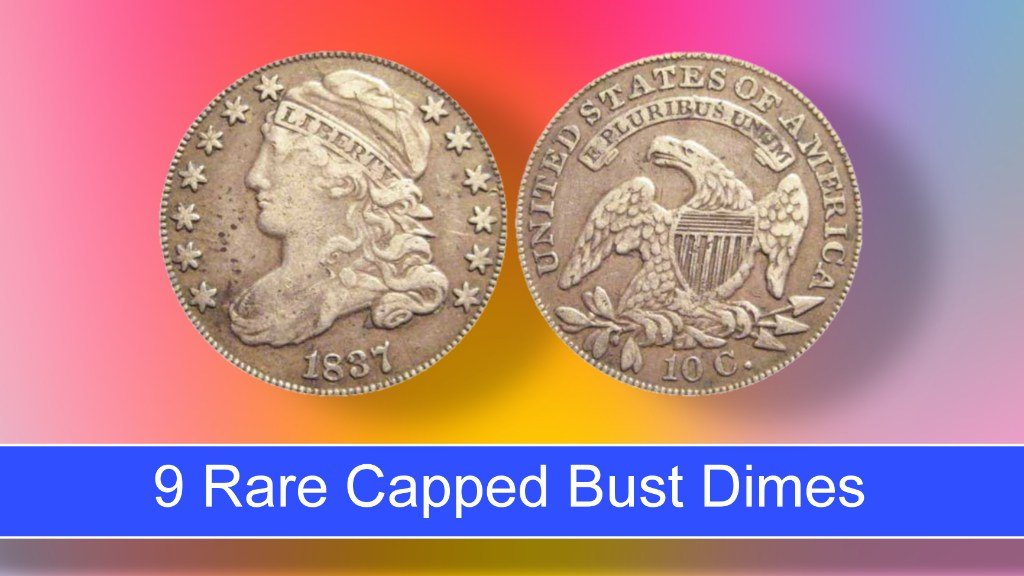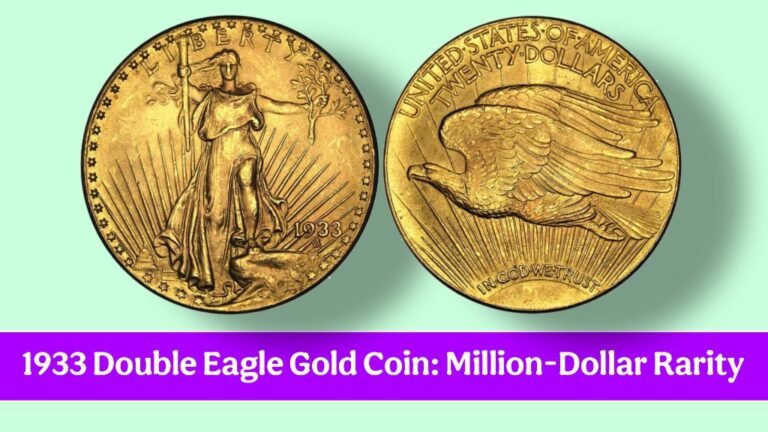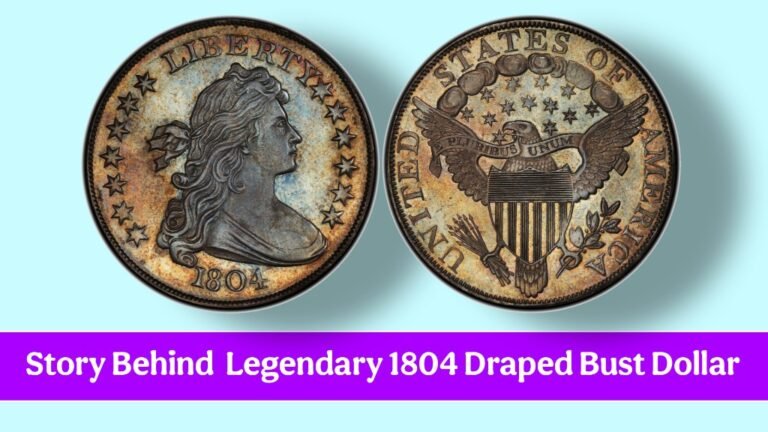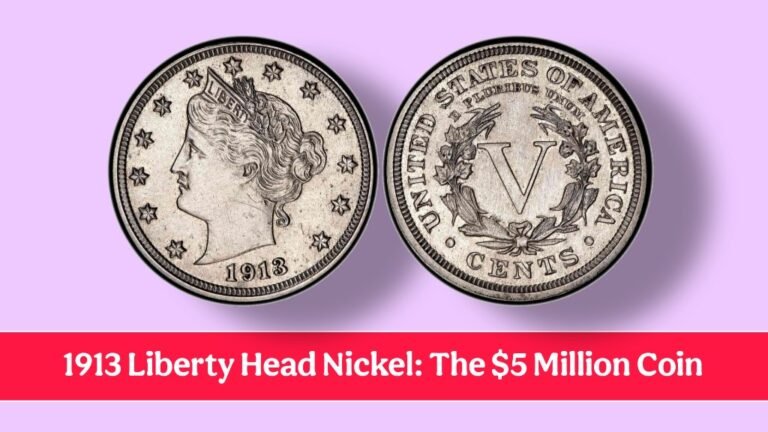9 Capped Bust Dimes Every Collector Wants – In the world of American coin collecting, few series capture the imagination and historical significance quite like the Capped Bust dime. Minted from 1809 to 1837, these dimes represent a pivotal era in U.S. numismatics—bridging early federal coinage with the more refined designs that would follow. With their iconic Lady Liberty wearing a soft cap adorned with a ribbon, the Capped Bust dime is both a symbol of liberty and a testament to the evolving artistry of early American mints.
For collectors today, acquiring even one Capped Bust dime is a notable achievement. But for serious numismatists, owning certain key dates and rare varieties from this series is akin to possessing pieces of living history.
In this article, we explore nine of the most coveted Capped Bust dimes—coins that stand out due to their rarity, condition, historical context, or unique minting anomalies. These are not just coins; they are artifacts of America’s formative years, each with a story as rich as the metal they’re struck from.
1. 1809 Capped Bust Dime (Small Date)
Though the Capped Bust design officially began in 1809, its debut was far from smooth. The United States Mint struggled with consistency, and the first year of issue produced two distinct date styles: large date and small date. The 1809 Small Date variety is particularly elusive, with only a handful known to exist in collector hands.
What makes this dime so desirable? Its scarcity. Fewer than 20 examples are believed to survive, and those that do often show signs of wear due to circulation. High-grade specimens can fetch six-figure sums at auction. The obverse features a left-facing Liberty with flowing hair beneath a draped cap, while the reverse displays a delicate eagle clutching arrows and an olive branch—a motif symbolic of peace through strength.
Collectors prize the 1809 Small Date not only for its rarity but also because it marks the beginning of a new artistic direction in U.S. coinage. Owning one is like holding the first page of a rare book—one that tells the story of American independence taking tangible form in currency.
Also read – 9 Rare Lincoln Pennies Collectors Are Hunting For
2. 1822 Capped Bust Dime
With an estimated mintage of just 15,000 pieces, the 1822 Capped Bust dime stands as one of the scarcest regular-issue dimes of the early 19th century. While other years saw tens or hundreds of thousands produced, 1822 was an anomaly—likely due to economic slowdowns and reduced demand for small denomination coins.
Surviving examples are typically found in lower grades, making high-condition specimens extremely valuable. PCGS (Professional Coin Grading Service) has certified fewer than ten in Mint State (MS-60 or higher), and when one appears at auction, it commands attention. The design follows the standard Capped Bust template, but what sets this coin apart is its pedigree. Many surviving 1822 dimes trace back to old collections formed in the late 1800s, adding to their provenance and allure.
For specialists building a complete date set, the 1822 is often the final—and most expensive—piece to acquire. It’s not merely a coin; it’s a milestone.
3. 1820/19 Overdate
Overdates occur when a die is punched with a new date over an old one, leaving traces of the previous year visible under magnification. The 1820/19 Capped Bust dime is among the most famous overdates in early U.S. coinage. Here, the “0” in 1820 was punched over a “9,” creating a subtle but detectable doubling effect on the last digit.
This error likely resulted from die-saving practices at the Philadelphia Mint, where engravers reused dies to save time and resources. But for modern collectors, such mistakes are golden opportunities. The 1820/19 is not only a fascinating study in minting processes but also a highly sought-after variety.
Only a few dozen are known to exist, and their value skyrockets in higher grades. Even circulated examples sell for several thousand dollars, while uncirculated specimens have crossed the $100,000 threshold. For variety hunters and error enthusiasts, the 1820/19 is a must-have trophy.
4. 1837 No Stars Capped Bust Dime
The year 1837 marked a turning point for U.S. dime design. The Capped Bust series ended, replaced by the Seated Liberty dime. However, early in 1837, the Mint struck a transitional version of the Capped Bust dime without stars on the obverse—known as the No Stars variety.
These dimes were produced before the full rollout of the new design and feature a simplified Liberty bust with no surrounding stars. Only a limited number were made before the Mint switched to the star-adorned version and then quickly phased out the type altogether.
Because of its transitional nature, the 1837 No Stars dime is a critical link between two major eras of American coinage. Collectors view it as the “last gasp” of the Capped Bust series. Its scarcity and historical importance make it a centerpiece in advanced collections.
5. 1814 4/5 Overdate
Another celebrated overdate in the series is the 1814 4/5, where the final digit “4” was punched over a “5.” This creates a distinctive appearance under magnification—the underlying “5” peeks through the surface, especially near the crossbar of the “4.”
This variety is particularly challenging to identify without expert analysis, which adds to its mystique. Known primarily to advanced collectors and researchers, the 1814 4/5 is a favorite among die variety specialists.
While not as publicly famous as the 1820/19, it holds comparable status within niche circles. Genuine examples are scarce, and counterfeits abound, making authentication crucial. When properly certified, this dime becomes a crown jewel in any collection focused on early mint errors.
6. 1817/6 Overdate
The 1817/6 overdate is another standout in the Capped Bust series. Here, the “7” in the date was punched over a “6,” resulting in visible remnants of the earlier digit. This variety is more pronounced than some others, often showing a clear “6” shadow beneath the “7.”
Fewer than 30 specimens are known to exist, and most are in low grades. Higher-grade examples are exceptionally rare and command premium prices. The 1817/6 provides insight into the manual die-punching process of the era, offering a glimpse into the human element behind mass-produced coins.
Numismatists who specialize in early 19th-century die varieties consider the 1817/6 a cornerstone piece. Its combination of visual appeal and technical interest ensures its place among the top-tier Capped Bust dimes.
7. 1834 Proof-Like Cameo Example
While most Capped Bust dimes were struck for circulation, a select few exhibit proof-like qualities—mirror-like fields and frosted devices indicative of special striking techniques. The 1834 proof-like cameo dime is one such example.
These coins were likely struck using polished dies and carefully prepared planchets, possibly for presentation sets or diplomatic gifts. True proofs from this era are exceedingly rare, but proof-like business strikes with cameo contrast are highly prized.
An 1834 with deep mirror surfaces and sharp detail can resemble a modern proof coin, despite being nearly 200 years old. Auction records show that such examples routinely exceed $50,000, with values climbing based on eye appeal and surface quality. For collectors who appreciate beauty as much as rarity, this dime is a masterpiece.
8. 1811 Capped Bust Dime
Though not an overdate or major variety, the 1811 Capped Bust dime earns its spot due to extreme scarcity. With a reported mintage of just 31,000, survival rates are low, and high-grade specimens are almost unheard of.
Most 1811 dimes show heavy wear, but a few have surfaced in About Uncirculated (AU) or even Mint State condition. These rarities are closely guarded by top collectors and rarely appear on the market. When they do, they attract fierce bidding.
The 1811 also coincides with a turbulent period in American history—the lead-up to the War of 1812. Coins from this era carry added historical weight, making them more than just numismatic objects. They are relics of a nation defining itself.
9. 1833 Crosslet 3 Variety
One of the most visually intriguing varieties in the series is the 1833 Crosslet 3, where the final “3” in the date features an extra horizontal bar or serif, giving it a cross-like appearance. This minor design quirk resulted from a specific die used at the Philadelphia Mint.
While not as rare as some overdates, the Crosslet 3 is distinctive and collectible. It appeals to both date collectors and variety specialists. Because it’s easily identifiable—even to novice collectors—it has gained popularity in recent decades.
High-grade examples with lustrous surfaces are particularly desirable. The 1833 Crosslet 3 bridges the gap between mainstream collecting and advanced variety hunting, making it a favorite among intermediate and elite collectors alike.
Also read – Top 10 Hardest-to-Find Morgan Silver Dollars
Why These Nine Matter
Each of these nine Capped Bust dimes represents something unique: a rare date, a fascinating error, a transitional design, or exceptional eye appeal. Together, they illustrate the depth and complexity of early American coinage. Collectors don’t just seek them for their monetary value—they pursue them for the stories they tell.
Owning one of these coins connects you to the artisans who engraved the dies, the mint workers who operated the presses, and the everyday Americans who carried them in their pockets. These dimes circulated during the presidencies of James Madison, Andrew Jackson, and John Quincy Adams. They were spent in frontier towns, coastal ports, and growing cities across a young republic.
From a technical standpoint, the Capped Bust series showcases the evolution of minting technology—from hand-punched dates to more standardized production methods. Each variety reflects the imperfections and innovations of its time.




